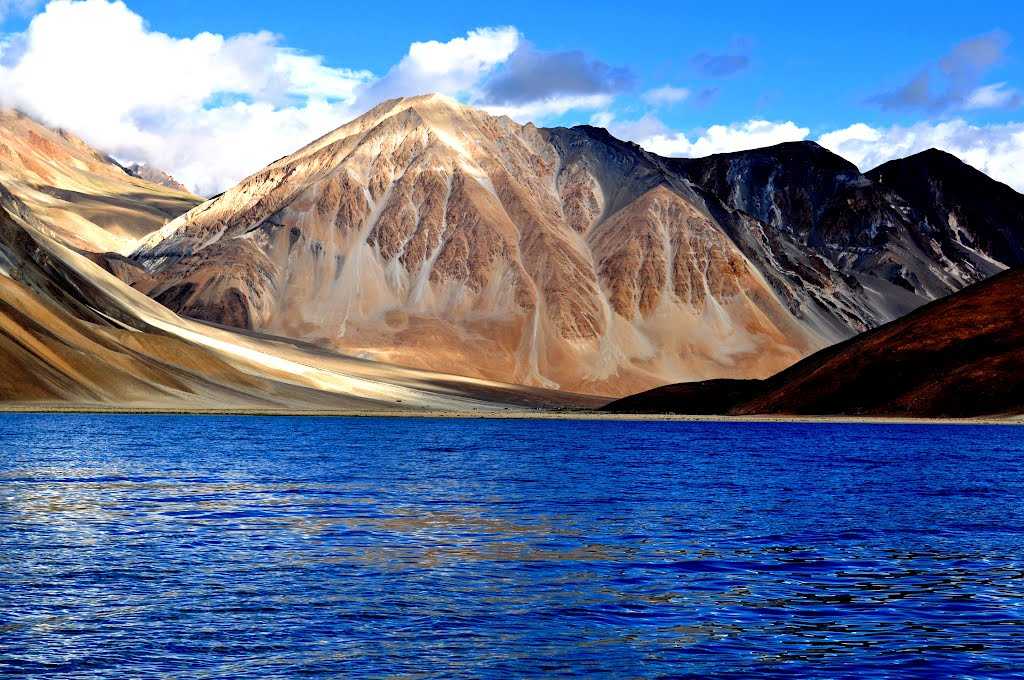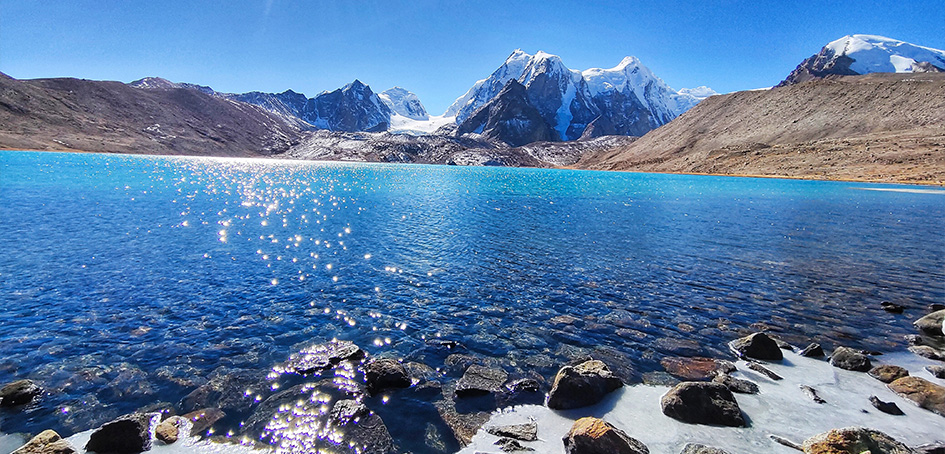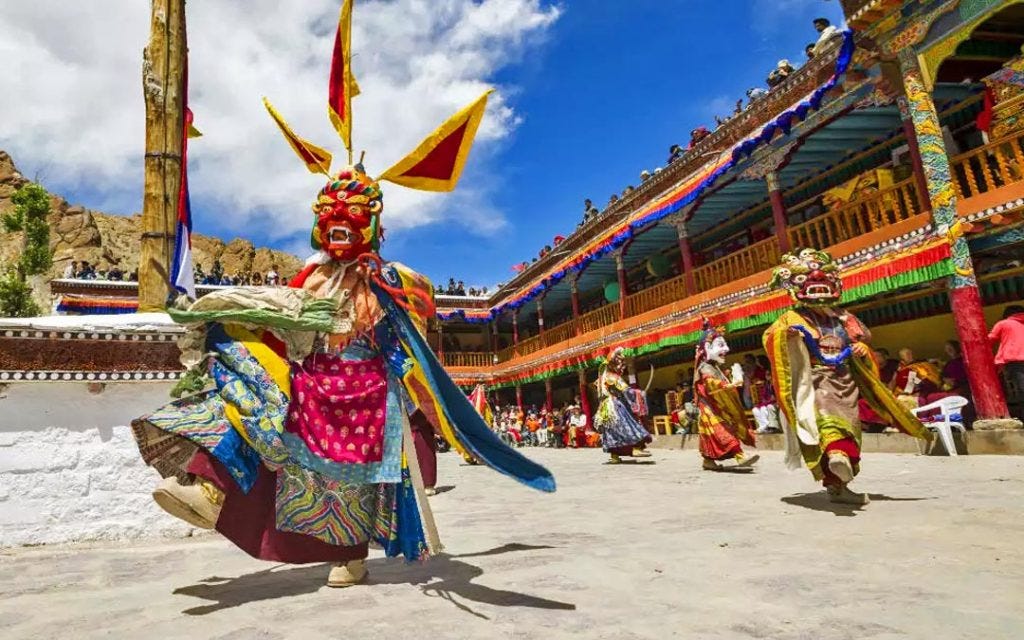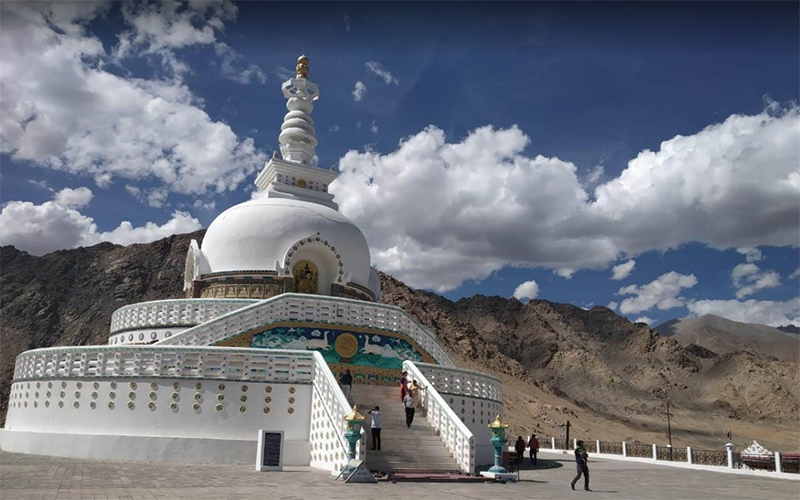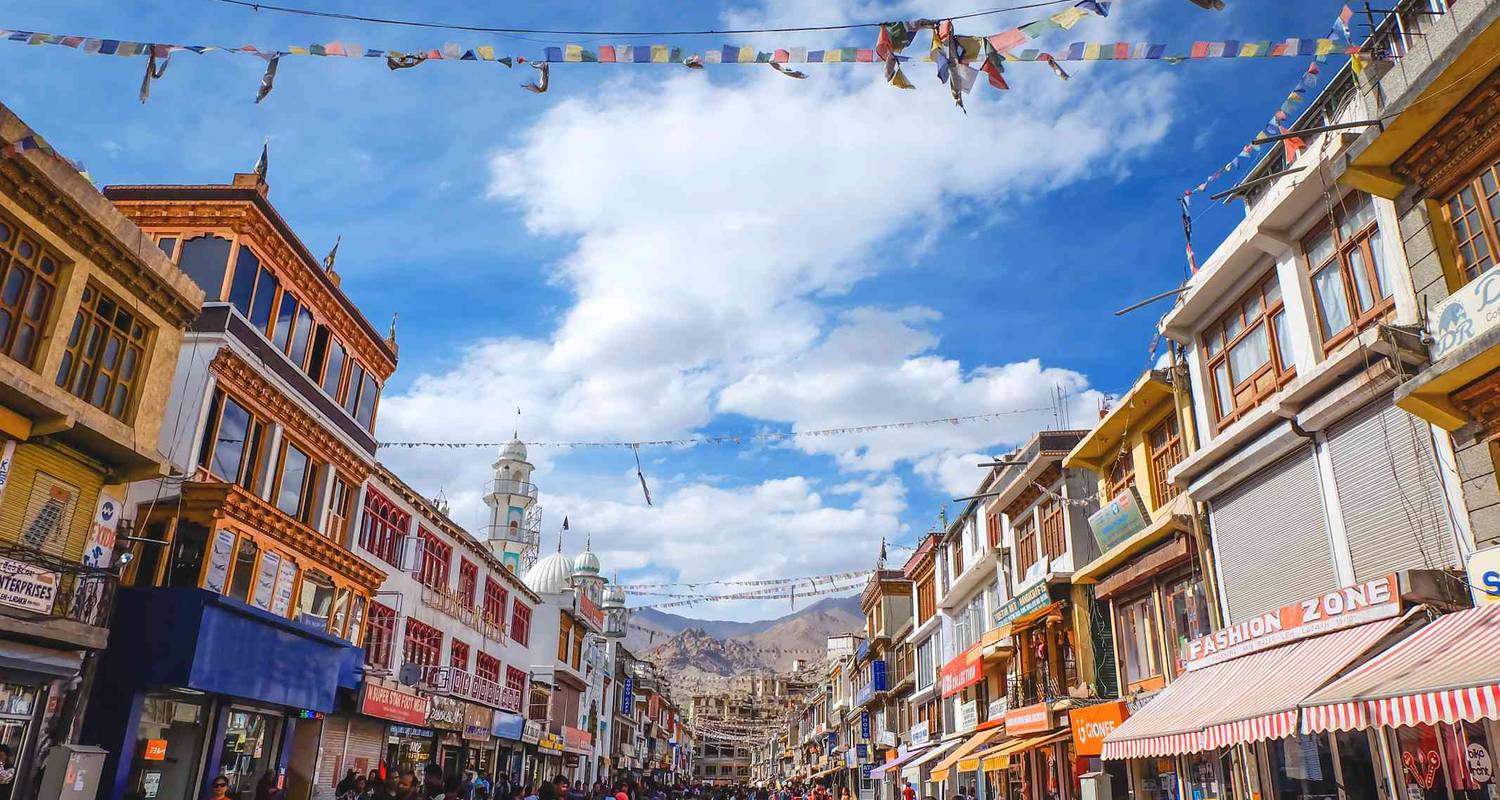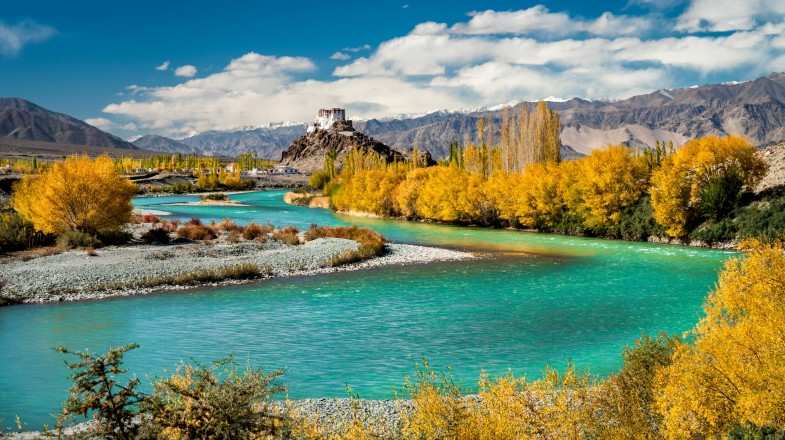4 Nights 5 Days View offer details
4N/5D accommodation Stay valid all days except peak season. Half day city tour Paying for food Is compulsory and it includes unlimited dinner and breakfast. 7 days prior booking should be confirmed
Validity : All Days
6 Nights 7 Days View offer details
6N/7D accommodation Stay valid all days except peak season. Half day city tour Paying for food Is compulsory and it includes unlimited dinner and breakfast. 7 days prior booking should be confirmed.
Validity : All Days
No OFFER AVILABLE AT THIS TIME.
........
- Overviews
- Amenities
- FAQ
A surreal landscape surrounded by the sky-piercing peaks of the snow-capped Himalayan, Zanskar and Karakoram ranges, and adorned with crystal waters of the Shyok, Zanskar and Indus rivers, Leh, in Jammu and Kashmir, is the main city in the Ladakh region, one of the coldest deserts in the world. Perched at a height of over 11,000 ft above sea level, the city of Leh is a haven of adventure sports. Its rugged terrain and gushing rivers provide ripe opportunities for activities like trekking, river rafting, camping, mountain climbing and biking. As the winter months approach, the city is enveloped in a blanket of snow, making it a paradisiacal setting for winter sports. The renowned Chadar Trek starts from the village of Chilling, 66 km away, and mostly covers the frozen area of River Zanskar. Throughout the adventure, trekkers are walking on precarious icy formations, staying in caves filled with stalactites and stalagmites and encountering other snowy landscape.
Leh is surrounded by three gorgeous high-altitude lakes, Tso Moriri, Tso Kar and Pangong Tso that look like sapphires embedded in the ground. A natural wonder that leaves tourists in awe is the Magnetic Hill on the outskirts of the city. It is said to defy gravity as it tends to pull vehicles upwards. Leh is a prominent Buddhist centre and is dotted with several important monasteries. Tourists can set on a monastery trail and admire the ancient cultures of the region come alive in various paintings adorning the walls while indulging in meditation and other therapeutic and spiritual activities.
Leh was the erstwhile capital of the kingdom of Ladakh and boasts a legacy that is reflective of its rich history. With the 17th-century Leh Palace at its heart, which is a great example of medieval Tibetan architecture, the city enjoys a smattering of heritage sites that stand tall to this day. One of the best ways to experience the culture of Leh is to check into a homestay where the host will leave no stone unturned in immersing guests in Ladakhi culture. Another great way to “taste” the region is by way of its fresh produce: apricots, apples, and other fruits and vegetables that can be found in its orchards and markets.
1. Pickup and Drop-off Services
- Airport/Railway Station Transfers
2. Local Transportation
- Sightseeing in Sedan Car
3.. Accommodation
- Hotels
4. Meals
- Daily Breakfast
- Lunch or Dinner
5. Tour Guide
- Professional Guides
- Language Options
6. Sightseeing Tours
- Itinerary
7. Cultural Experiences
- Local Performances
8. Assistance and Support
- 24/7 Assistance
Frequently Asked Questions?
-
1. What is the best time to visit Leh-Ladakh?
The best time to visit Leh-Ladakh is from May to September when the weather is pleasant and roads are accessible. This period is ideal for sightseeing, trekking, and other outdoor activities.
-
2. How many days are ideal for a Leh-Ladakh tour?
A typical Leh-Ladakh tour lasts between 7 to 10 days, allowing ample time to acclimatize and explore key destinations such as Leh, Nubra Valley, Pangong Lake, and Tso Moriri.
-
3. What types of accommodation are available?
Accommodation options range from budget guesthouses and homestays to mid-range hotels and luxury resorts. Campsites are also available at locations like Pangong Lake and Nubra Valley.
-
4. Are there any special accommodations?
Yes, staying in campsites near Pangong Lake or Tso Moriri is a popular and unique experience included in many tour packages.
-
5. What are the must-visit places in Leh-Ladakh?
Must-visit places include Leh (Leh Palace, Shanti Stupa), Nubra Valley (Diskit Monastery, Hunder Sand Dunes), Pangong Lake, Tso Moriri, Magnetic Hill, and Lamayuru Monastery.
-
6. What activities can I do in Leh-Ladakh?
Popular activities include trekking, river rafting, camel safaris in Nubra Valley, mountain biking, and visiting monasteries and historical sites.
-
7. Is Leh-Ladakh safe for tourists?
Yes, Leh-Ladakh is generally safe for tourists. However, it’s important to acclimatize properly due to high altitude and to follow local advice for a safe trip.
-
8. What health precautions should I take?
Acclimatize properly to avoid altitude sickness, stay hydrated, protect yourself from the sun, and carry necessary medications. It’s advisable to consult a doctor before traveling to high altitudes.
-
9. How will we travel between different destinations in Leh-Ladakh?
Most packages include private or shared vehicles for intercity travel. Traveling by motorbike or bicycle is also popular among adventure enthusiasts.
-
10. Are local guides provided?
Many packages include local guides for sightseeing tours. They provide valuable insights and ensure a smooth experience.
